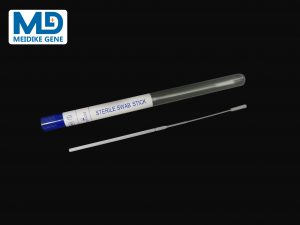鼻咽頭スワブの包装手順:
一: 鼻サンプリングスワブを使用します 50 手順
1. サンプルを完全に浸すために必要なこの製品の量を推定します (1g組織には10mLが必要です).
2. コレクションチューブに印を付け、この製品の推定量を追加します.
3. 最速で0.5cm未満の厚さでサンプルを断片に切ります.
4. コレクションチューブ内の製品に組織片を完全に浸します.
5. コレクションチューブを適切な温度のある場所に保管してください. 保管時間は、その温度での最大貯蔵時間を超えることはできません. -20°Cまたは-80°Cで保管したい場合, 最終温度に移動する前に、サンプルを4°Cで一晩置く必要があります. ノート: サンプルを-20°Cまたは-80°Cに転送する前に, 保護ソリューションを破棄する必要があります. 共通の保管温度とその最大貯蔵時間との関係は次のとおりです:
6. 保管場所からサンプルを取り出す (-20°Cまたは-80°Cで保存されたサンプルは、室温で解凍する必要があります), 滅菌鉗子を使用して、保護溶液から組織片を取り除きます.
7. すぐに RNA 抽出またはその他の処理を開始する (サンプルを小さな断片に分割してから再保存するなど). ノート: サンプルは、RNA の品質に影響を与えることなく、20 回の凍結と解凍を繰り返すことができます。.
コメント
1. 一般的な細菌のために鼻咽頭スワブを培養することは推奨されません, 特殊菌以外, 百日咳菌や髄膜炎菌など.
2. 百日咳菌の感染が疑われる場合, 特別な伝達媒体を準備するために事前に検査室に通知する必要があります (リーガン・ロウ). 条件が許せば, 接種培地を提供することができます, 真っ直ぐ
3. ベッドサイドで接種後、研究室へ移動.
4. 鼻咽頭スワブは、副鼻腔炎の病原体を検出するために使用できません.

















